Input interpretation

monomethylhydrazine
Chemical names and formulas
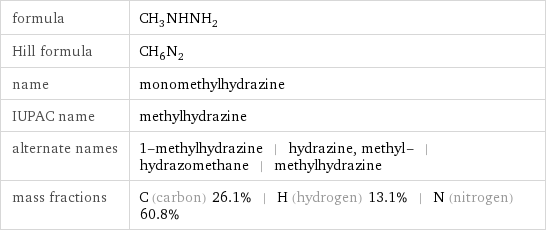
formula | CH_3NHNH_2 Hill formula | CH_6N_2 name | monomethylhydrazine IUPAC name | methylhydrazine alternate names | 1-methylhydrazine | hydrazine, methyl- | hydrazomethane | methylhydrazine mass fractions | C (carbon) 26.1% | H (hydrogen) 13.1% | N (nitrogen) 60.8%
Lewis structure

Draw the Lewis structure of monomethylhydrazine. Start by drawing the overall structure of the molecule: Count the total valence electrons of the carbon (n_C, val = 4), hydrogen (n_H, val = 1), and nitrogen (n_N, val = 5) atoms: n_C, val + 6 n_H, val + 2 n_N, val = 20 Calculate the number of electrons needed to completely fill the valence shells for carbon (n_C, full = 8), hydrogen (n_H, full = 2), and nitrogen (n_N, full = 8): n_C, full + 6 n_H, full + 2 n_N, full = 36 Subtracting these two numbers shows that 36 - 20 = 16 bonding electrons are needed. Each bond has two electrons, so the above diagram has all the necessary bonds. There are 8 bonds and hence 16 bonding electrons in the diagram. Lastly, fill in the remaining unbonded electrons on each atom. In total, there remain 20 - 16 = 4 electrons left to draw: Answer: | |
3D structure
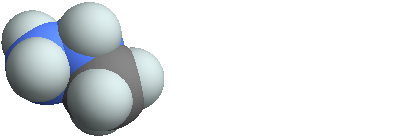
3D structure
Basic properties
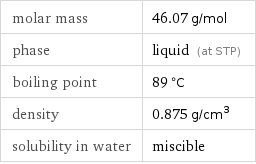
molar mass | 46.07 g/mol phase | liquid (at STP) boiling point | 89 °C density | 0.875 g/cm^3 solubility in water | miscible
Units

Hydrophobicity and permeability properties

predicted LogP hydrophobicity | -0.62 predicted LogS | -1.05
Basic drug properties

approval status | experimental | small molecule
Liquid properties (at STP)
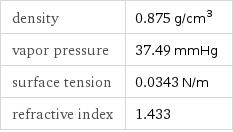
density | 0.875 g/cm^3 vapor pressure | 37.49 mmHg surface tension | 0.0343 N/m refractive index | 1.433
Units

Thermodynamic properties
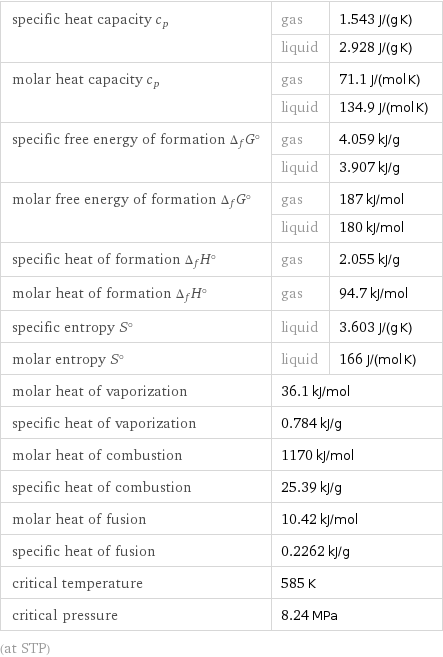
specific heat capacity c_p | gas | 1.543 J/(g K) | liquid | 2.928 J/(g K) molar heat capacity c_p | gas | 71.1 J/(mol K) | liquid | 134.9 J/(mol K) specific free energy of formation Δ_fG° | gas | 4.059 kJ/g | liquid | 3.907 kJ/g molar free energy of formation Δ_fG° | gas | 187 kJ/mol | liquid | 180 kJ/mol specific heat of formation Δ_fH° | gas | 2.055 kJ/g molar heat of formation Δ_fH° | gas | 94.7 kJ/mol specific entropy S° | liquid | 3.603 J/(g K) molar entropy S° | liquid | 166 J/(mol K) molar heat of vaporization | 36.1 kJ/mol | specific heat of vaporization | 0.784 kJ/g | molar heat of combustion | 1170 kJ/mol | specific heat of combustion | 25.39 kJ/g | molar heat of fusion | 10.42 kJ/mol | specific heat of fusion | 0.2262 kJ/g | critical temperature | 585 K | critical pressure | 8.24 MPa | (at STP)
Chemical identifiers

CAS number | 60-34-4 Beilstein number | 635645 PubChem CID number | 6061 PubChem SID number | 24896964 SMILES identifier | CNN InChI identifier | InChI=1/CH6N2/c1-3-2/h3H, 2H2, 1H3 InChI key | JYXPWUYLZPYOAH-UHFFFAOYAE RTECS number | MV5600000 MDL number | MFCD00007621
NFPA label

NFPA label
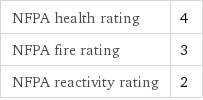
NFPA health rating | 4 NFPA fire rating | 3 NFPA reactivity rating | 2
Safety properties
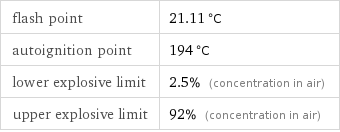
flash point | 21.11 °C autoignition point | 194 °C lower explosive limit | 2.5% (concentration in air) upper explosive limit | 92% (concentration in air)

DOT hazard class | 6.1 DOT numbers | 1244
Toxicity properties

threshold limit value | 0.01 ppmv

RTECS classes | tumorigen | mutagen | reproductive effector